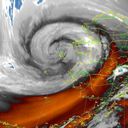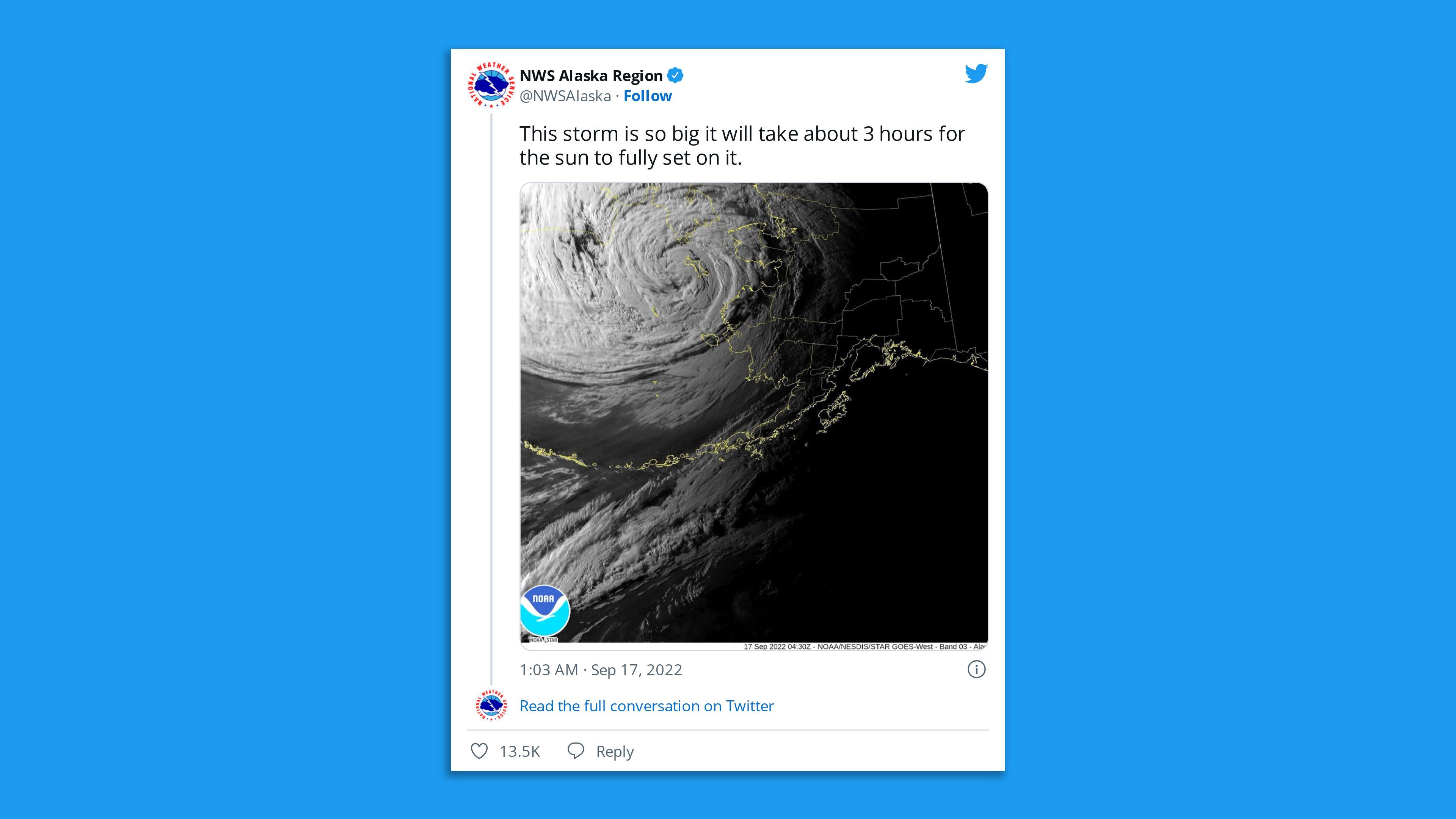Three massive storms slam U.S. and Japan, each with climate change ties

Three blockbuster storms struck different coasts this weekend, causing widespread damage in Puerto Rico, Alaska and Japan.
The big picture: Each storm either exhibited unusual characteristics in its formation and intensification or in its interaction with built infrastructure.
- Their damage offers examples of what we can expect more of in a rapidly warming world.
In Alaska: The most intense storm ever recorded in the Bering Sea during the month of September blasted communities across a 1,000-mile stretch of Alaska's western coastline with hurricane-force winds and record storm surge flooding.
- The villages hit include names familiar to the climate community for being vulnerable to erosion and seeking to move to higher ground, such as Kivalina and Shishmaref.
- Severe flooding was also seen in Nome, the endpoint of the Iditarod sled dog race. The flooding there beat any seen since November 1974.
- By battering already vulnerable coastal communities, the storm will make them more susceptible to the Bering Sea's notorious winter storms.
In Puerto Rico: Hurricane Fiona struck on Sunday, causing an island-wide blackout that illustrates the country's challenges with repairing its electrical grid in the wake of Hurricane Maria in 2017.
- Hardening infrastructure against increasingly potent extreme weather events is a major challenge facing the U.S.
- At one point Sunday evening, nearly the entire island was under a flash flood warning, with "catastrophic" flooding underway.
In Japan: Typhoon Nanmadol, the country's fourth-most intense typhoon to make landfall, struck the island of Kyushu on Sunday morning eastern time.
- The storm dropped more than two feet of rain in 24 hours on parts of that island, threatening to cause landslides, along with wind and storm surge flooding.
- Climate change is enabling hurricanes and typhoons to dump more rainfall and stay stronger further north.
- Prior to its landfall, the storm had rapidly intensified — a process with climate change ties and reached Category 4 intensity.
Zoom in: The Alaska storm has the clearest links to climate change from a physical science standpoint, scientists told Axios.
- The storm evolved from Typhoon Merbok, which underwent an unusually rapid and explosive transition process over the North Pacific into a storm that feeds off jet stream energy.
- Scientists told Axios the storm's formation, transition and impacts have global warming ties.

Between the lines: The typhoon formed unusually far to the east, over anomalously warm waters, said Rick Thoman, a climate scientist at the University of Alaska at Fairbanks, via email.
- It then passed over record warm waters in the North Pacific, which injected more energy.
- "This is surely a climate change connection," Thoman said.
- Brian Brettschneider, a climate scientist based in Alaska, said such intense, out-of-season storms may become more frequent as climate change progresses.
- Scientists have long warned that rapid Arctic warming, with melting permafrost, sea level rise and longer ice-free seasons would imperil Alaska's coastal communities.
- Shaktoolik, an Iñupiat community of about 320 people, lost its protective berm, leaving them fully exposed to future storm surge flooding.
- "We're pretty heartbroken," the mayor told Alaska Public Media News.